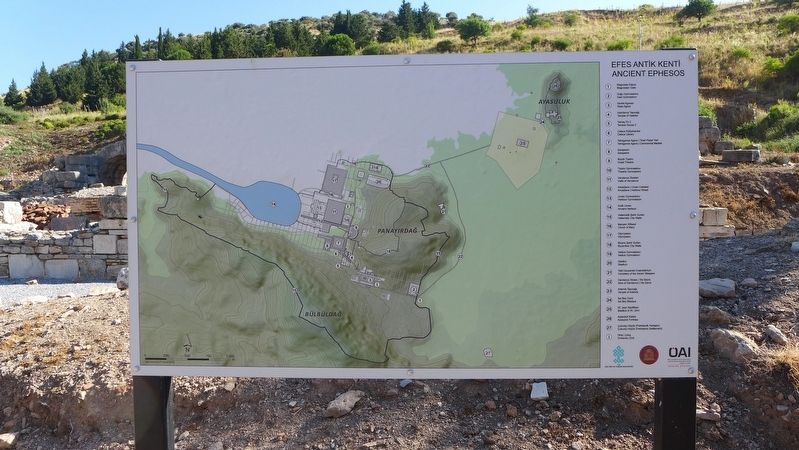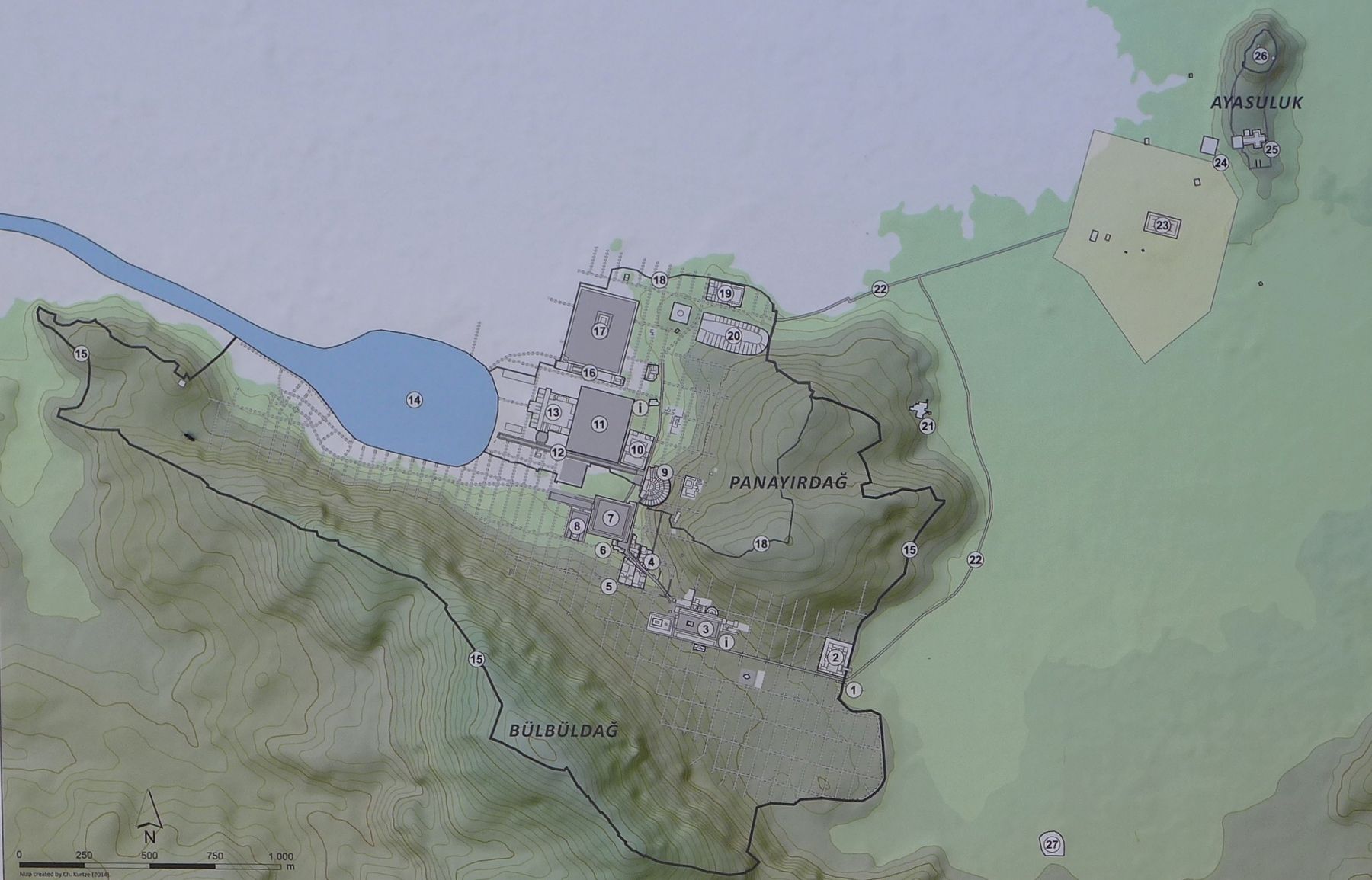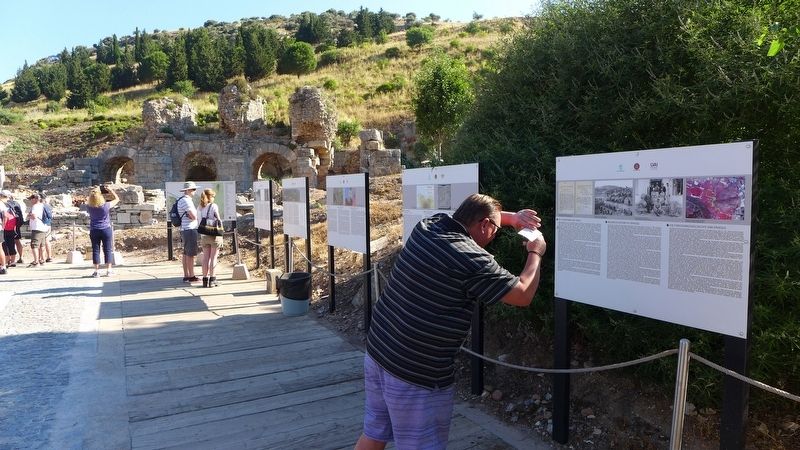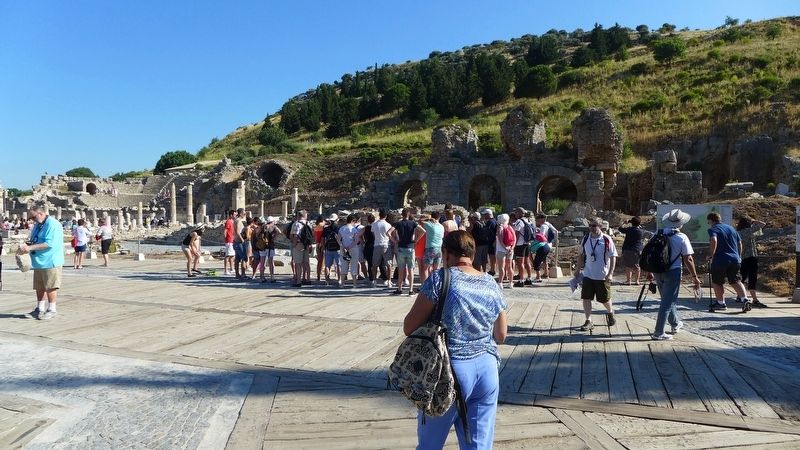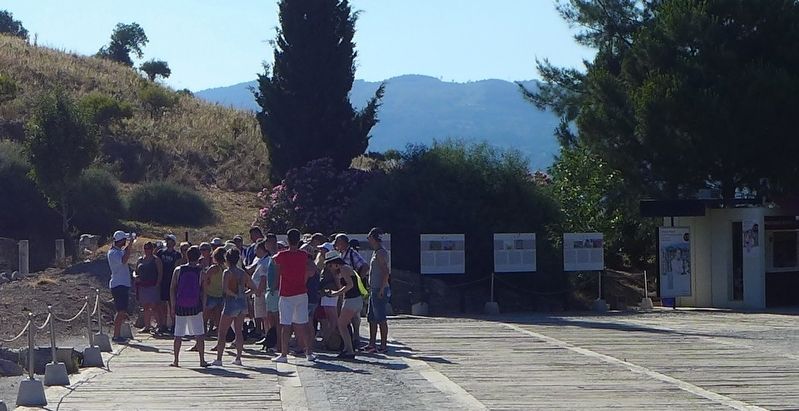Near Acarlar in Selçuk, İzmir, Turkey — West Asia or Southeast Europe
Ancient Ephesos
English Text:
(1) Magnesian Gate
(2) East Gymnasium
(3) State Agora
(4) Temple of Hadrian
(5) Terrace House 2
(6) Celsus Library
(7) Tetragonos Agora ][ Commercial Market
(8) Serapeion
(9) Great Theatre
(10) Theatre Gymnasium
(11) Halls of Verulanus
(12) Arcadiane ][ Harbour Street
(13) Harbour Gymnasium
(14) Ancient Harbour
(15) Hellenistic City Walls
(16) Church of Mary
(17) Olympieion
(18) Byzantine City Walls
(19) Vedius Gymnasium
(20) Stadium
(21) Cemetery of the Seven Sleepers
(22) Stoa of Damianus ][ Via Sacra
(23) Temple of Artemis
(24) Isa Bey Mosque
(25) Basilica of St. John
(26) Ayasuluk Fortress
(27) Çukuriçi Höyük (Prehistoric Settlement)
Erected by Republic of Turkey Ministry of Culture and Tourism, and the Österreichisches Archaeology Institute.
Topics. This historical marker is listed in these topic lists: Churches & Religion • Forts and Castles • Settlements & Settlers.
Location. 37° 56.169′ N, 27° 20.74′ E. Marker is near Acarlar, İzmir, in Selçuk. Marker can be reached from Efes Yolu just south of Dr. Sabri Yayla Boulevard (Route D515) when traveling south. The marker is in an archaeological park that is about 3 km (2 miles) southeast of Selçuk. Touch for map. Marker is in this post office area: Acarlar, İzmir 35920, Turkey. Touch for directions.
Other nearby markers. At least 8 other markers are within walking distance of this marker. Byzantine Ephesos (here, next to this marker); Roman Ephesos (here, next to this marker); The Hellenistic Ephesos (a few steps from this marker); The Early Ephesos (a few steps from this marker); Research History of Ephesos (a few steps from this marker); Baths at the 'State Agora' (within shouting distance of this marker); Processional Way (within shouting distance of this marker); The 'State Agora' (within shouting distance of this marker). Touch for a list and map of all markers in Acarlar.
More about this marker. This marker is one of the many markers that are situated at the archaeological park that displays the ruins of the ancient city of Ephesus. One web site boasts that the ruins that one can see and experience at Ephesus are, "better than Rome itself," and although some of the artifacts found in this area have been dated back to about 6,000 BC, most of what the visitors to the archaeological park see, date back to the glory years of Greece and Rome.
Credits. This page was last revised on February 2, 2022. It was originally submitted on March 14, 2018, by Dale K. Benington of Toledo, Ohio. This page has been viewed 286 times since then and 29 times this year. Photos: 1, 2, 3, 4, 5. submitted on March 14, 2018, by Dale K. Benington of Toledo, Ohio.
